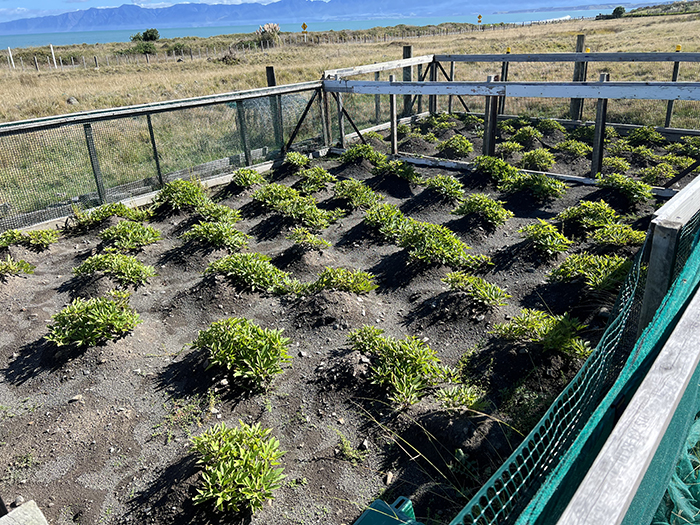Malnutrition and starvation likely stalked pre-European Maori settlements on Wairarapa’s south coast, particularly when kumara gardens yielded small or no crops so that much of the carbohydrate supply for the villagers was lost.
That’s among the findings from a 24-year research project into growing kumara in Palliser Bay’s sandy soils on the property of Bob and Diane Buckley at Whatarangi. A parallel experimental kumara garden was grown and recorded for 12 years at Robin Hood Bay in Marlborough.
A report, “Yield of kumara from two gardens,” records considerable variation year-by-year including no crop in 2005 in the south and very low yield in 2015 at Whatarangi.
“This means a degree of unreliability that would be potentially devastating for communities relying on kumara crops for subsistence,” the report notes.
The research indicates that Palliser Bay could support a population of just over 200 people in the pre-European period. “These would have been in small villages of around 30 people” located in each of the five main river valleys.
“Cook Strait was not an easy place for pre-European Māori to live in.” the findings note. Despite unlimited fish and shellfish providing good protein, the villagers needed the kumara gardens to produce good crops that would provide essential carbohydrates.
“Humans cannot survive long on sources of protein alone and quickly begin to suffer from what is known as ‘rabbit starvation,’ caused by lack of either fat or carbohydrate (needed) to offset the accumulation of nitrogen in human tissues from eating too much protein.” the research papers reported.
The 24 years of growing kumara crops showed what is described as “wild fluctuations” in the annual yield of kumara, which in turn added up to severe hardship – including starvation – for the villagers.
As missionary William Colenso noted in his travels in the region there was real hardship when the crops failed in the mid-19th century.
The years of kumara cultivation at Whatarangi (from 2001) saw crop yields vary from over 26 tonnes per hectare to only 2 tonne/hectare. Such large fluctuations “are not correlated with any known environmental conditions,” the report said.
The research team monitored air and soil temperature, rainfall, sunshine hours, and 15 soil nutrients for 14 years to try to find the cause of the wild crop yield fluctuations, but “without success.”
The most recent annual harvest at Whatarangi in Palliser Bay carried out on 12 April had a yield “among the lowest” recorded in the 24 years of the project.
Writing in the Journal of Pacific Archaeology, the researchers noted:
“The variable annual yield that has been revealed by this 23 year-long experiment points to profound hardship for the 200 or so people living there for nine or more centuries. The experiment has shown occasional crop failure, and this would be devastating for the communities. Even without crop failure, storing all of the harvested kūmara until the following harvest … would be virtually impossible.”
The research has been supported in the South Island by Te Ati Awa, Ngati Rarua, Ngati Toa, and Rangitane; in the North Island by Ngati Hinewaka, and whanau at Kohunui Marae. The small research team, headed by Foss Leach and Janet Davidson of Martinborough, has published five research papers in academic journals, and reported results to various marae over the years.
The Palliser Bay experiment continues, with results reported in several publications, including the Journal of Pacific Archaeology.



